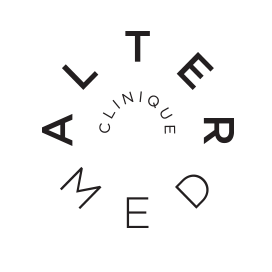Clinique altermed
Montreal masso-kinesitherapy
Pregnancy is an extraordinary time of life, marked by profound physical and emotional changes. Pregnant women face a myriad of upheavals, from back pain to mood swings and restless nights. Massage therapy is an invaluable ally in alleviating these aches and pains and improving the general well-being of expectant mothers.
BENEFITS
1. Reduced stress and anxiety
Pregnancy can be a stressful time. Expectations, worries and hormonal upheaval can contribute to anxiety. Massage therapy can help reduce these stress levels by promoting the release of endorphins, the happy hormones. Soothing massage techniques and relaxation sessions enable expectant mothers to relax deeply, promoting a calm and serene mind.
2. Body Pain Relief
Body aches and pains are common during pregnancy. The weight of the growing baby puts pressure on the back, shoulders and legs. Back pain is particularly common. Massage therapists specializing in massage therapy for pregnant women use specially adapted techniques to relieve these aches and pains. By applying gentle, targeted pressure, they can improve blood circulation, reduce inflammation and relax tense muscles.
3. Improving blood circulation
Pregnancy can lead to blood circulation problems due to the pressure exerted on blood vessels by the expanding uterus. Massage therapy can help stimulate blood circulation, promoting better oxygenation of tissues and elimination of toxins. This can benefit both mother and fetus.
4. Reducing edema
Edema, or water retention, is a common symptom of pregnancy, manifesting as swelling of the feet and ankles. Massage therapy can help reduce edema by promoting lymphatic drainage. By combining specific techniques, massage therapists can help expectant mothers feel more comfortable.
5. Preparing for childbirth
Massage therapy can also play a role in preparing for childbirth. Massage therapy sessions can help pregnant women feel more in tune with their bodies, boosting their self-confidence for childbirth. What's more, the muscular relaxation promoted by massage can help reduce physical tension during labor, thus facilitating the birthing process.
6. Mother-baby connection
Massage therapy for pregnant women offers a unique opportunity to strengthen the connection between mother and baby. Gentle, attentive massage can help the mother feel more connected to her body and her unborn child. It's a privileged moment for meditation and reflection, enabling the expectant mother to create special memories with her baby even before he's born.
TECHNIQUE
In massage therapy for pregnant women, the techniques used are specifically adapted to take account of pregnancy-related needs and concerns. Here are a few technical details to better understand how massage therapy can be beneficial:
1. Patient positioning
Pregnant women often lie on their sides during massage, using support cushions to maintain a comfortable position. This position minimizes pressure on the abdomen and ensures the safety of both mother and fetus. Sometimes, massages can also be performed in a semi-seated position to relieve pressure on the back.
2. Suitable massage techniques
Massage therapists trained in massage therapy for pregnant women use gentle, specific techniques. Swedish massage is often preferred, but can be adapted to suit the patient's individual needs. Movements are slow and deliberate, with moderate pressure to avoid discomfort. Kneading, effleurage and light pressure movements are commonly used.
3. Focus areas
Massage therapists concentrate on the areas where pregnant women most need relief. This often includes the lower back, shoulders, legs and feet. These areas are subject to increased tension during pregnancy due to weight distribution and hormonal changes.
4. Lymphatic drainage techniques
Lymphatic drainage is a technique that can be used to reduce edema, by promoting the movement of lymphatic fluids. This helps reduce swelling in the feet and ankles.
5. Use of essential oils
Pregnancy-safe essential oils, such as lavender or chamomile, can be used to add a relaxing dimension to the massage. However, it is essential to ensure that the patient has no sensitivity to fragrances and that oils are diluted appropriately.
6. Communication with the patient
Massage therapists encourage open communication with the patient to ensure that she feels comfortable throughout the session. The patient's concerns and preferences are taken into account, and massage therapists adjust accordingly. This important period of transition calls for special listening and empathy, due to hypersensitivity and the more assertive and felt expression of needs.
7. Regular sessions
For best results, regular massage therapy sessions are often recommended throughout pregnancy. This helps to maintain relief from bodily pain and reduce stress on an ongoing basis.


